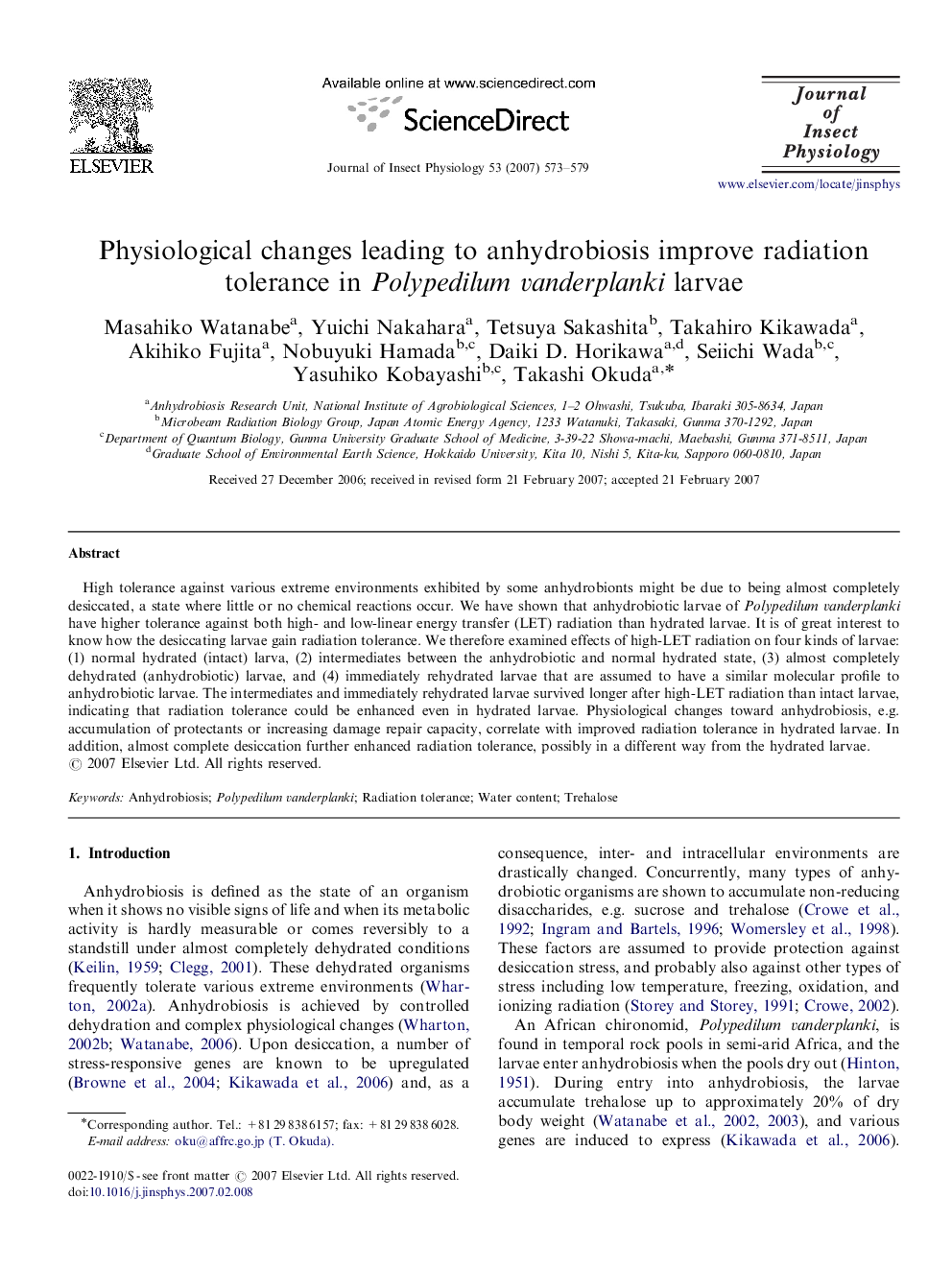| کد مقاله | کد نشریه | سال انتشار | مقاله انگلیسی | نسخه تمام متن |
|---|---|---|---|---|
| 2841597 | 1165412 | 2007 | 7 صفحه PDF | دانلود رایگان |

High tolerance against various extreme environments exhibited by some anhydrobionts might be due to being almost completely desiccated, a state where little or no chemical reactions occur. We have shown that anhydrobiotic larvae of Polypedilum vanderplanki have higher tolerance against both high- and low-linear energy transfer (LET) radiation than hydrated larvae. It is of great interest to know how the desiccating larvae gain radiation tolerance. We therefore examined effects of high-LET radiation on four kinds of larvae: (1) normal hydrated (intact) larva, (2) intermediates between the anhydrobiotic and normal hydrated state, (3) almost completely dehydrated (anhydrobiotic) larvae, and (4) immediately rehydrated larvae that are assumed to have a similar molecular profile to anhydrobiotic larvae. The intermediates and immediately rehydrated larvae survived longer after high-LET radiation than intact larvae, indicating that radiation tolerance could be enhanced even in hydrated larvae. Physiological changes toward anhydrobiosis, e.g. accumulation of protectants or increasing damage repair capacity, correlate with improved radiation tolerance in hydrated larvae. In addition, almost complete desiccation further enhanced radiation tolerance, possibly in a different way from the hydrated larvae.
Journal: Journal of Insect Physiology - Volume 53, Issue 6, June 2007, Pages 573–579